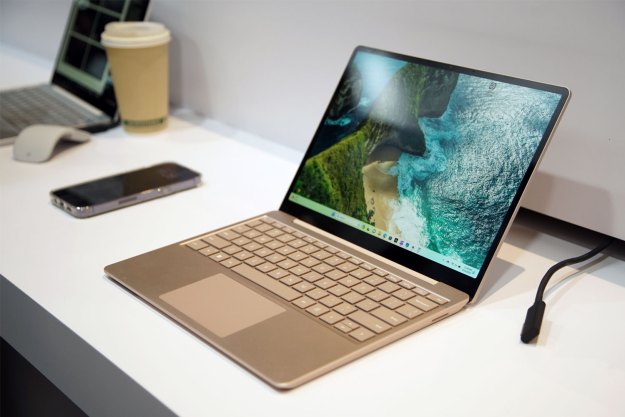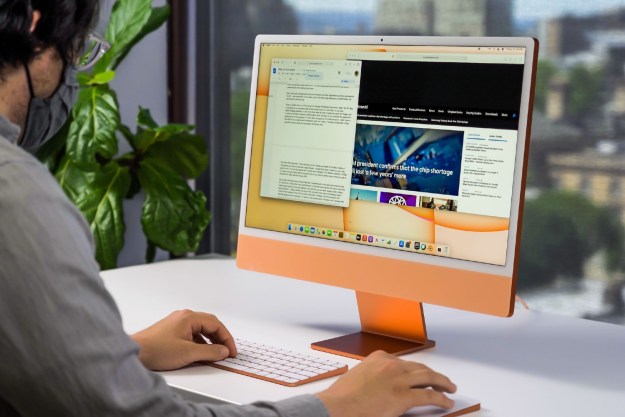Earlier this year, we did a comparison between the original Surface Go and the previous-generation, base level iPad. Both Apple and Microsoft have updated their entry-level tablets, so we thought it would be fitting to pit their latest offerings against each other.
When we reported on the announcement of the Surface Go 3, we said that it could make a compelling alternative to the new base $329 iPad. Starting at $400, the Surface Go 3 costs $70 more than the iPad. Is it worth it?
Design and portability
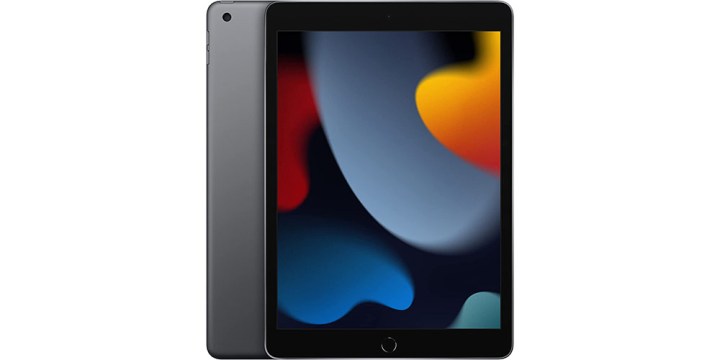
Both the Surface Go 3 and iPad 2021 retain the same basic design as their predecessors. Unlike the iPad Mini, the regular iPad doesn’t get any of the fancy new features, such as the squared off-chassis, support for the 2nd-gen Apple Pencil, or USB-C connectivity. The Surface Go 3, on the other hand does, include USB-C (though not Thunderbolt 4 like its big brother). That USB-C connector on the Surface Go 3 makes it much more versatile than the base iPad, which still retains a single Lightning connector.
Though the base iPad’s screen isn’t as nice as the more expensive models, it still has a sharp 2160 x 1620 resolution at 264 pixels per inch. The Surface Go has a 1920 x 1280 display with a pixel density of 220 pixels per inch.
Carrying both of these tablets around shouldn’t be an issue. The iPad comes in at 1.07 pounds for the Wi-Fi model and 1.09 pounds for cellular models. The Surface Go is slightly heavier at 1.2 pounds. That’s not factoring in attached accessories, but using these strictly as tablets shouldn’t be an issue. Those who need to carry a tablet all day, especially standing up, should probably look at the iPad Mini.
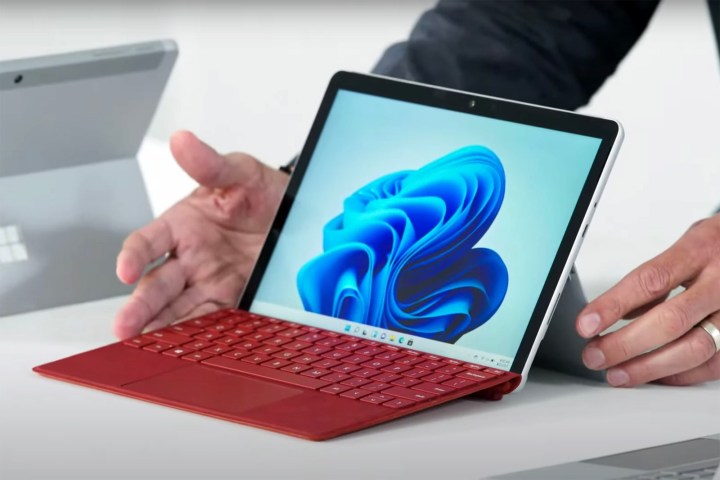
Speaking of accessories, both tablets can be equipped with certain add-ons to increase functionality. The iPad is compatible with Apple’s Smart Cover and Smart Keyboard via the Smart connector on the side. The Surface Go 3 is compatible with Microsoft’s Surface Type Cover to provide keyboard functions. Each tablet also has its own requisite pen input with the Apple Pencil (1st generation) and Surface Pen.
It must be noted that there isn’t a cellular option for the Surface Go 3. The iPad is the only one of these that supports LTE connectivity while on the go. For those who prefer Microsoft, the Surface Pro X is what you’ll want.
Performance
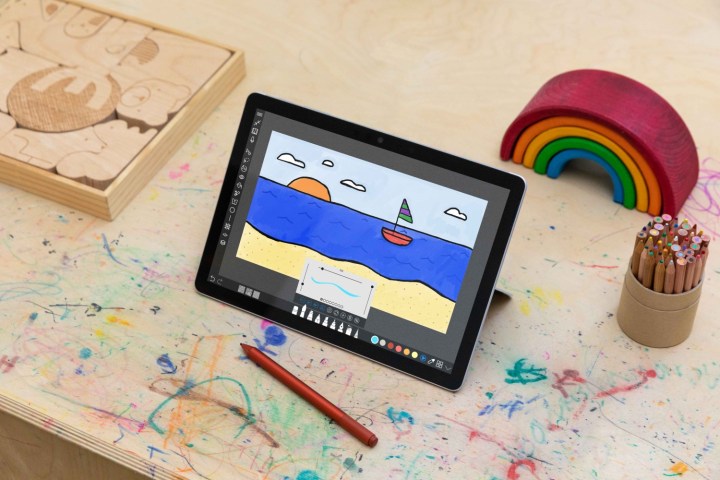
Our previous assessment had Apple’s in-house silicon beating Intel’s modest offerings — and it’s still valid. The base iPad has Apple’s A13 Bionic, which was originally found in the iPhone 11 series. The Surface Go has either a dual-core Intel Pentium Gold 6500Y or dual-core 10th-gen Core i3-10100Y. The latter processor is based on Amber Lake from 2018 and features Intel’s HD Graphics 615 GPU.
As you might expect, the 2018 CPU can’t hold a candle to Apple’s system on a chip from 2019. It was difficult to find exact benchmarks for the 10100Y, but since it uses an older chipset, we can use its closest cousin, which is the Core i5-8200Y, for comparison. This CPU scored 900 points in single-core performance, compared to the A13’s score of 1335. Similarly, Apple’s multi-core score of 3427 demolishes the i5-8200Y’s 1934.
It must be noted that both the 8200Y and 10100Y are both dual-core CPUs, while the A13 Bionic is a six-core. This explains why the multi-core score was so lopsided. So if performance is what you’re after, the iPad is a no-brainer. Apple silicon is able to easily handle heavy workloads like video editing, while the Surface Go 3 is probably suited to more light loads.
iPadOS vs Windows 11

Admittedly, this probably comes down to preference, as both operating systems are geared for slightly different uses. Apple’s iPadOS diverges slightly from the mainline iOS for smartphones in order to create more specialized features for the larger form factor. The newest iteration, iPadOS 15, adds more multitasking gestures including, the ability to have multiple browser windows side by side. There’s also more robust mouse support for those who want more precise input.
Windows 11 has gone through major design changes to facilitate more touch-based input. It’s almost the opposite of what Apple is doing with iPadOS. Microsoft increased touch targets to make the overall UI easier to use with your fingers. Window manipulating via touch is also much improved, which is important for a touch-centric device like the Surface Go 3. All of the updates to Windows 11 finally allow the Surface line to live up to its true potential.
The Surface Go 3 runs on Windows 11 Home in S-mode. This limits app downloads to the Microsoft Store only. Similarly, iPad apps can only be officially downloaded via the Apple App Store. However, Apple has the benefit of thousands of apps that have been designed from the ground up for the iPad. That does give the iPad an advantage when it comes to dedicated apps, however, since the Amazon App Store is coming to Windows 11, that will give Surface Go 3 users a whole host of additional Android apps to use.
Let’s not forget that Windows 11 is a full desktop operating system. While the Surface Go 3 ships in S-mode, that can be turned off, allowing for installation of nearly every Windows application out there. That also means users aren’t constrained by iPadOS’ limited window management; while better than before, it still doesn’t afford to same flexibility as Windows.
Value proposition
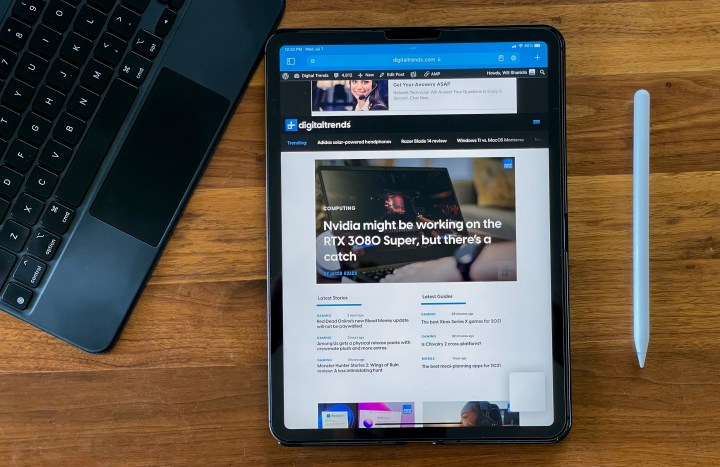
The Apple ecosystem is partly what gives Apple such an advantage in the mobile market. Buying an iPad means you have a whole marketplace of third-party Bluetooth keyboards, cases, and more. Furthermore, iPads benefit from Apple’s massive vertical integration of all of its products, which make it work well with other Apple products.
Admittedly, this is probably subjective for everyone. Apple’s ecosystem advantages are very real, but only really concern those who have already invested into it. Those who use Amazon Echo devices and/or Google devices and Android smartphones would likely benefit more from the Surface Go 3 unless they prefer the performance from the iPad.
Pricing is also a huge concern for many as these two tablets are meant to compete in the more budget-friendly arena. The iPad 2021 starts at $329, but can go up to $479 for a 256GB Wi-Fi model or $609 for the LTE model. The Surface Go 3 starts at $400 for the Pentium 6500Y model with 4GB of RAM and 64GB eMMC storage. This can be configured up to the Core i3 with 8GB of RAM and 128GB for $630. The 256GB option is only available for business customers.
Those priced might sound tenable, but keep in mind that’s not including the cost of any necessary accessories like attachable keyboards and styluses. The Surface Type Cover is usually a must-have for a Surface tablet, though Windows 11 may make it easier to use without it.
Apple’s base-level iPad provides a lot of value in the way of its low cost combined with high performance and optional cellular connectivity. Those not invested in the Apple ecosystem probably aren’t missing out on a lot if you choose the Surface Go 3. In fact, the Surface Go 3 could be quite a value for those who need a proper desktop operating system and all the flexibility that comes with it.
Editors' Recommendations
- Best Apple deals: Save on AirPods, Apple Watch, iPad, MacBook
- The best budget laptops for 2023
- The M3 iMac is here, but it’s missing its most requested change
- This sleeper Asus laptop is faster and cheaper than Microsoft’s Surface Laptop Go 3
- Surface Laptop Go 3 vs. Surface Pro 7+: is it an upgrade?


